Author’s Note: This is the third installment in a three-part series on prospects for “mediation”, “reconciliation” and “negotiation” with the ruling Thugtatorship of the Tigrean People’s Liberation Front (T-TPLF). I have explained the purposes of the series in the Author’s Note of Part I and Part II.
In Part III here, I aim to sketch out the general outlines for a national reconciliation process in Ethiopia which I hope will evolve into a roadmap for genuine truth and reconciliation.
The series on truth and reconciliation in Ethiopia will continue indefinitely.
I had initially anticipated that I could sketch out my views in three commentaries, but indeed had underestimated the task. Given the enormous importance of the issue, I have decided to continue the series indefinitely with the aim of providing civic education and sharing my views on truth and reconciliation to my readers and all Ethiopians.
I dedicate the series to all of Ethiopia’s youth that have made the ultimate sacrifice to free their country from minority ethnic apartheid rule and those struggling, going to jail and dying every day to establish a democratic society based on the rule of law.
I also intend the series to be a trifling memorandum to history recording that I did what little I could with my puny pen to help guide the Ethiopian people avoid civil war and achieve civil peace; to abandon the path of revenge for the path of reconciliation; to find justice in truth and truth in justice; to choose the Beloved Community Martin Luther King talked about over the land of hate and wrath Ethiopia has become under a ruthless thugtatorship.
Special Note: I hear complaints from some, from time to time, that my writings are too long and difficult to understand. I am urged to keep them to a few hundred words.
I respectfully ask those who complain about the length of my commentaries not to read or even attempt to read them. I am not writing for the inquiring minds of the National Enquirer. I am writing for those who have inquiring minds about the Nation of Ethiopia! I urge those having difficulty reading and understanding my prose to try a little harder. I am also aware that there are some who cannot handle the naked truth and feel sandblasted by my commentaries every week and want me to stop writing. If they stop lying about Ethiopia, I will stop telling the truth about them.
For me, speaking and writing about Ethiopia and the Ethiopian people is a passion, a sacred duty for which I have been divinely blessed. I write not only for the present generation but also generations to come. These are my chronicles of the time of pain and suffering of the Ethiopian people as I have observed them from a very long distance. But time and space do not mean much to me when it comes to Ethiopia. Suffice it to say, you can take the boy out of the country and keep him away for one-half century, but there is no way on earth you can take the country out of the boy even if you announce on international radio that you have “doubts about the Ethiopian-ness” of that PROUD boy.
I am filled with unbridled optimism about the future of Ethiopia. In July 2012, I wrote about my “Dreams of an Ethiopia at Peace”. In January 2017, I issued an appeal to all Ethiopians to “Dare to Dream With Me About the New Ethiopia in 2017”. Today, peace is at hand and the twilight of the nightmare of ethnic apartheid is visible over the horizon under the shimmering glow of Ethiopiawinet.
I have no doubts all Ethiopians will reconcile because they are wrapped up in a single garment of destiny, as MLK would say. They will reconcile because truth will forever not hang on the scaffold nor wrong remain forever on the throne.
Ethiopia’s youth (Cheetahs) united can never be defeated!
Ethiopiawinet TODAY, Ethiopiawinet TOMORROW, Ethiopiawinet FOREVER!
“A luta continua… … A vitória é certa.” (“The struggle continues… …victory is certain”.)
============================== ==============
No people [in the world] will remain smothered, meaning oppressed, for ages. It is [a] universal [truth]. No people, to the extent that they are people [human beings] and [as evident] in world history will not remain [like an inanimate object] in one place, they will not stay put in one place as one [an oppressor] may want them. When they [people] become very bitter, they explode. This is a universal truth. There are no people who will not rise up when they become bitter [can’t take it anymore]. Historically. Now. And in the future. — Aboy Sebhat Nega, T- TPLF czar, mastermind, kingpin, godfather, guru, power-behind-the-throne and capo di tutti capi (boss of all bosses) (2015).
Could there be reconciliation when “there is no government” (“mengist yelem”)?
The prophesy of the T-TPLF Godfather Sebhat Nega is coming to pass before our eyes. “No people in the world will remain smothered, oppressed, for ages. When they people become very bitter, they explode. This is a universal truth.”
In my August 2016 commentary, “The Volcano, the Beast and the Tiger”, I wrote about the Ethiopian powder keg with a slow burning fuse attached to the T-TPLF.
In my May 2017 commentary, “The Good Kops/Bad Kops T-TPLF Con Game (Over)”, I pointed out the irrefutable fact that the T-TPLF today barely clings to dear political life sitting on a powder keg holding by a thread it calls a “state of emergency” decree.
Today, the people of Ethiopia are exploding in every hamlet, town and city.
In 2018, the T-TPLF has only two choices: Armageddon or Reconciliation with the rest of the Ethiopian people before it is too, too late and save itself from its own arrogance, hubris and the tragic errors of its ways.
Perhaps it is too late, too little to do anything. Reconciliation may be a day late and a dollar short. The practical question is whether the Wounded Beast is in any shape to do reconciliation with anyone (including its members and partners) as it writhes in its death throes.
The evidence showing the T-TPLF slowly imploding and self-destructing under the weight of its corruption, competing of political ambitions and fraternal warfare is self-evident.
Ethiopia today is a stateless state, a failed state, a make-believe state.
In Ethiopia today, “Mengist yelem!” (There is no government.)
Rene Lefort captured the current situation in his perceptively cogent November 2016 piece, “Ethiopia’s Crises”. Lefort argued:
People have stopped taking notice of anything the ruling power says, seeing it as incapable of handling the situation. In short, trust has gone… Both in central government and in the regional authorities, or between one and the other, authority has dramatically deflated… The man in the street could only conclude: “Mengist yelem!” – “Authority [Government] has disappeared!”. This perception, initially confined to the cities, is increasingly reaching into the rural areas as they open up more and more… The government’s primary role is to maintain law and order, and it has proved incapable of doing so; worse still, the violence of repression is further fueling discontent. In the end, rather than fulfilling its first duty, the ruling power has become the principal cause of revolt.
The T-TPLF is said to be divided into two unyielding factions both seeking to destroy each other, consolidate power and become dominant by securing a support base in the security services and the military.
Over the past months, the T-TPLF bosses have been engaged in a series of meetings and conferences presumably aimed at improving the organization’s structure and process and to conduct “self-criticism”, a relic of Marxism-Leninism aimed at getting rid of bad practices and instituting good ones. But it appears those meetings have resulted in significant purges from the executive committee of the party including two powerful figures, Azeb Mesfin, the widow of the TPLF mastermind Meles Zenawi and Abay Woldu, TPLF chairman, who was replaced by Debretsion Gebremichael (currently wallowing in an international prostitution scandal.) The warring factions are cannibalizing each other by leaking highly secret and damaging information as they fight for dominance and supremacy. The rank and file in the vast patronage system are forced to choose sides making the possibility of a sudden implosion imminent. In short, the T-TPLF has become a dog-eat-dog organization. They are at the end of their rope.
It is said that a faction of the T-TPLF is so desperate that it was forced to recall Seeye Abraha from exile. Seeye was one of the original founders of the TPLF and later served as defense minister. In an intense political struggle following the Ethio-Eritrean war of the late 1990s, Meles Zenawi jailed him for six years on corruption charges. After his release, he was forced into exile where he remained for the past six years. Seeye had a strong support base in the TPLF before his fallout with Meles. Perhaps those elements are in ascendance now and may have invited him back for a payback, the coup de grace, the final blow against those who humiliated and railroaded him to prison. I don’t know. Time will tell whether Seeye proves to be the knight in shining lance and armor atop a white horse saving the TPLF, or the winning faction, from itself or hasten its demise.
What we have today is a T-TPLF Emperor with new (no) clothes. The proverbial Emperor was told by a clever tailor he would make him a glorious outfit which is visible only to smart people. The tailor pretended to be making clothes for the Emperor who could see he is naked but did not want to admit it fearing he would be called a fool. His courtiers also praised the new (no) clothes. The Emperor went into the street to be greeted by his people. The crowd went wild praising the Emperor’s new clothes until a child called out, “But the Emperor has no clothes!” Everyone then admitted it was a scam.
The T-TPLF pretends to be a government, acts like a government and talks like a government. Everyone says, “The Ethiopian government…” Laughably, even opposition leaders and groups talk about the “Ethiopian government”. But the simple truth is, in Ethiopia, “Mengist yelem!” There is no government! The TPLF is a scam!
The TPLF house is a hot mess. To complicate things, the T-TPLF itself believes there is no government as it implodes into warring factions. But collectively, regardless of who wins the internal factional wars, they perceive their situation as terminally desperate. They survived and thrived for over a quarter of a century following the maxim, “All for one and one for all.” Today, the TPLF follows the maxim, “All deck rats, abandon sinking ship!”
The TPLFers feel trapped like a rat on sinking ship unable to jump. They feel they are between a rock and the deep blue sea. They feel the walls are closing in on them. They believe the other ethnic groups are ganging together for their eventual destruction. They can plainly see the people are not afraid of them or their guns and helicopter gunships. As the old saying goes, “A dead donkey fears no hyenas.” The T-TPLF has made donkeys out of Ethiopians, their beast of burden. But the people are fighting back with civil disobedience, nonviolent resistance and noncooperation. The TPLF can see before their eyes their ethnic apartheid system dissolving day by day and their dream of becoming masters of Ethiopia until kingdom come fading into the trash bin of history. The TPLF is in its death throes from self-inflicted wounds and wounds that boomeranged on it from a quarter century of crimes and corruption.
Therein lies the greatest danger for Ethiopia. How to reconcile with a Wounded Beast in its death throes?
A wounded beast of the wilderness or the politically wounded beast will react in irrational ways if it sees no way out. It becomes desperate and dangerous. Even a rat when cornered and has no means of escape will attack until it can attack no more. The T-TPLF is now a cornered wounded rat. They are massacring innocent unarmed citizens by the dozens every day because they feel they can get out of the hot mess they created over the past quarter century by killing and massacring innocent unarmed citizens. Just last week, the UN High Commissioner for Human Rights condemned the massacres in Woldiya City in Amhara regional state.
So, I come to the million dollar question: Is it possible to discuss reconciliation with a Wounded Beast in its death throes? Which one of the various factions of the Wounded Beast will be available for reconciliation dialogue?
Under these circumstances, could talk of national reconciliation be nothing more than shadowboxing a naked emperor.
Hard Talk: Whether real reconciliation (not fake, not make-believe, not pseudo) is perceived as possible and desirable by the Ethiopian people today or if reconciliation is just con game played among the elites
In my conversations with the common folks, I get the impression that they feel the time for real reconciliation is long gone and any talk about reconciliation today is merely window dressing by those teetering on the precipice of power and others jockeying for power.
The common folk tell me that if the TPLF was really interested in reconciliation it could have done it decades ago. For the TPLF, reconciliation is nothing more than a game of delay and buying more time to consolidate power while making cosmetic changes. So, they feel any reconciliation with the TPLF will be a fake, pseudo and make-believe reconciliation that could only prolong the days of the TPLF in power and throw ice water over the fire of popular resistance and grassroots struggle.
In light of what appears to be prevailing doubt among the common folk, a few hard questions need to be asked at the outset: 1) Is reconciliation a practical option in Ethiopia today given the rapidly deteriorating crises? 2) Are those who are jumping on the reconciliation bandwagon driven by wishful thinking and fear of the unimaginable alternative? 3) How well-informed are the people daydreaming about reconciliation and how much substantive knowledge do they have about the process, problems, challenges, opportunities and mechanics of reconciliation from the experiences and experiments of other countries? Is reconciliation the only game in town at this point in Ethiopian history which everyone must play? Are the foreign and domestic elites pushing an uncertain and vague agenda of “reconciliation” on the people? Is reconciliation really possible with all of the TPLF massacres and violence against unarmed citizens taking place in real time? Is negotiating with the TPLF the same as clapping with one hand?
The fact of the matter is that in the real world of the people I talk to keep me grounded and not be lost with my ilk in the ivory towers wearing rose-colored lenses have reasonable doubt about the whole idea of reconciliation with the TPLF. They keep me humble with their wisdom rooted in experience. They make a lot of sense.
First, it is true that they do not know what “reconciliation” means in practice. Few of the learned elites and political leaders have attempted to explain it to them. No one has asked their views nor have they volunteered it. What is clear is that they are sick and tired of being sick and tired of the TPLF.
Second, they are completely doubtful about any reconciliation with the TPLF that could result in a fundamental democratic restructuring of power. I interpret that to mean, they simply do not believe the TPLF’s ethnic apartheid system could be dismantled as the TPLF will fight tooth and nail to maintain it.
Third, they tell me that given the apparent TPLF internal division between the hard-core that wants to kill its way out of the crises and the not-so-hard-core faction willing to democratize and share power, the two would neutralize each other making any meaningful reconciliation process impossible. In other words, if one TPLF faction makes a separate peace, the other faction will wage a separate war.
Fourth, I am told the TPLF’s satellite parties are today coming of age and asserting their “adulthood” principally under extreme pressure by the youth. They are no longer willing to be treated by the TPLF like wayward children who must be guided and disciplined. They have their own ideas and plans of action. They want to be in complete charge of running their own affairs without TPLF intervention or interference. They are challenging the very fabric of ethnic federalism and openly choosing Ethiopiawinet. They are with the TPLF in body only. For all intent and purposes their marriage to the TPLF has ended. They are only waiting for the divorce decree from the people. If reconciliation between the TPLF (EPRDF) marriage partners is not possible, how could it be possible with the rest of the country?
Fifth, I am told that those pretending to represent the opposition in negotiations with the TPLF are either self-designated or indirectly selected by the TPLF to play a part in the political drama staged by the TPLF. They are not elected or authorized by the people. They are engaged in political fraud. They are not legitimate and are more interested in looking out for their interests than the peoples’ interest. They should be exposed and condemned as opportunists and rogues.
Sixth, I am told the burning issues in the minds of the man and woman on the streets and country roads is not reconciliation but runaway inflation, skyrocketing cost of living, a devalued currency, rising unemployment, exorbitantly expensive housing and the rest of it. Indeed, inflation reported to be 6.1 percent in January 2016 had more than doubled by December 2017 to 13.6 percent.
So, the simple question is this: Do angry and hungry people want to feed on talk and empty promises of reconciliation?
My irrevocable commitment to truth and reconciliation
I still believe truth and reconciliation is possible despite evidence and opinion to the contrary.
I am not a Johnny-come-lately to the issue of reconciliation and the need for a reconciliation process to return Ethiopia to a peaceful, just and democratic society. I started my personal struggle for human rights and the rule of law by declaring my core belief that nonviolent struggle was the only way we could achieve a just and lasting peace.
In my very first public statement in July 2006, I declared, “I believe we prove the righteousness of our cause not in battlefields soaked in blood and filled with corpses, but in the living hearts and thinking minds of men and women of good will.” For me, from day 1, it has been a struggle for hearts and minds of Ethiopian men and women of good will. It has been about truth and reconciliation, first and foremost, in hearts and minds.
In July 2012, I wrote about my “Dreams of an Ethiopia at Peace”. I also made a prediction about the “volcanic pressure building up slowly but surely in Ethiopia. We see small precursor eruptions here and there. Public dissatisfaction with the status quo has turned to utter public desperation. People cannot afford the basic necessities of life as inflation and cost of living soar to new heights. Corruption, abuse of power, massive repression and poor governance are about to blast the dome on the grumbling volcano. The situation is deteriorating by the day…”
In my September 2014, “Resolutions for the Ethiopian New Year”, I presented my case not for reconciliation, but most importantly, for a truth and reconciliation process and put out a call:
Ethiopians need to establish a truth and reconciliation process. I believe that process must begin at the individual and small group level. If Ethiopians as individuals cannot talk openly about the truth and reconcile, it is a pipe dream to hope for national reconciliation. I am saddened by the fact that those who have committed crimes against humanity and atrocities have written books purporting to document an accurate historical account of events without taking real personal responsibility for their role in the evil they helped perpetrate. They offer half-truths and hide behind the other half trying to project themselves as victims. They should strive to take a leadership role in telling the truth, the whole truth and nothing but the truth and serve as bridges of reconciliation.
A truth and reconciliation process provides societies with a painful past to come to terms with the crimes and atrocities committed in the name of the state and take individual and collective action to prevent its future repetition. “Those who do not learn from history are doomed to repeat it.” Practicing truth and reconciliation is the only way to escape the doom of history. In 2007, I hope to promote such a process at every opportunity I get.
In my April 2013 commentary, “The Audacity of Evil in Ethiopia”, I declared my “unshakeable belief that there will come a time in Ethiopia when the demands of punishment, blame and justice would have to be weighed against the greater good of peace, harmony and reconciliation. There will come a time when the open wounds of ethnic division, hatred and sectarianism must be healed and safeguards put into place to prevent their future recurrence.”
I have spent many years studying experiences and experiments in truth and reconciliation in many countries hoping someday I may be able to share whatever little knowledge I have gained in my studies. I hope to do just that in a small way in this effort.
In this series, I have argued the “impossibility” of reconciliation with the TPLF. It is not uncommon for lawyers to play the “devil’s advocate” (pun intended). Indeed, to make a convincing argument in favor of reconciliation, I have to make an equally vigorous argument against its possibility. The fact remains that there are many Ethiopians who reflexively believe it is impossible to reconcile with the TPLF. Period. Their point of view needs to be heard.
What makes my position somewhat different, without manifestly being self-contradictory, is that I believe and am committed to removing the “im” from “impossible”. Nothing is impossible among men and women of good will and good faith. That is my credo.
The truth and reconciliation show must go on
Despite the naked reality about the current crises and public wrath against the TPLF, the reconciliation show must go on, to paraphrase an American idiom,
Why?
Because TIME IS RUNNING OUT.
Time is running out on a peaceful resolution of the country’s crises as the TPLF continues to unleash its killing machines and dogs of war on the people.
The people have lost fear of the TPLF and they are coming out every day to show their opposition peacefully only to be greeted with a hail of bullets. But they continue to come out, unafraid and with their heads unbowed.
So, there are only two choices available: 1) a peaceful transition to democratic rule or 2) spiraling into a civil war driven by ethnic antagonisms.
I believe the opposition and the people want the first choice. They have been crying out for democratic rule for over a quarter of a century only to be slapped in the face by TPLF claims of electoral victory by 99.6 and 100 percent.
Frankly, I have no idea what the TPLF as an organization wants. If I were a betting man, I would say war.
Not long ago, the TPLF godfather Sebhat Nega, in one of his drunken stupors, reportedly said that the TPLF will never give up power they have gained with the blood of their fallen fighters at the ballot or in reconciliation.
Getachew Reda, a TPLF mouthpiece, also demanded that the Ethiopian people pay the people of Tigray for all their sacrifices. Reda forgets his TPLF launched armed struggle against Ethiopia to establish the Republic of Tigray. Now, he wants the people of Ethiopia to pay reparations. It is the TPLF that has massacred, jailed and tortured tens of thousands of innocent Ethiopians over the past four decades which must pay reparations.
But Reda follows good precedent. Mengistu Hailemariam also demanded payment of families for the “wasted bullets” used to kill their innocent loved ones. How the more things change, the more they remain the same.
Beyond verbal statements, the TPLF bosses believe they have total control over the military and security forces and therefore could cling to power indefinitely and massacre their way out of any crises. But the TPLF today is facing a force more powerful than guns and helicopter gunships called nonviolent resistance. The young people of Ethiopia are coming out everywhere and facing TPLF fire with nothing but guts and courage.
The power of nonviolent resistance drove the British out of India and the communists out of Russia and Eastern Europe. The power of nonviolence does not come from physical capacity but an indomitable will, as Gandhi taught. More recently, Aung San Suu Kyi made an observation that is fitting to young Ethiopians waging a nonviolent struggle. “Human beings want to be free and however long they may agree to stay locked up, to stay oppressed, there will come a time when they say ‘That’s it.’ Suddenly they find themselves doing something that they never would have thought they would be doing, simply because of the human instinct that makes them turn their face towards freedom.”
Malala Yousafzai, the courageous 15 year-old Pakistani school girl who was shot by the Taliban for insisting girls should be educated and won the Nobel Peace Prize in 2014, in my view best expresses the situation of all young people in Ethiopia. In her Nobel lecture, Malala described her untenable situation under the Taliban. “I had two options. One was to remain silent and wait to be killed. And the second was to speak up and then be killed. I chose the second one. I decided to speak up.” She explained, “We were scared, but our fear was not as strong as our courage.”
Such is precisely the situation of Ethiopia’s young people fighting for their lives, liberties and futures. They will be massacred by the TPLF whether they speak up or remain silent.
The Ethiopian people, of whom 70 percent are under age 35, have reached the limits of their patience and endurance. They have come to a point where they have said, “Enough is enough. That’s it!” They are speaking up, acting up and flagging up green, yellow and red. The TPLF is spilling their red blood in the streets.
In making their statements, Ethiopia’s young people suddenly found themselves doing something that they never would have thought they would be doing. They stood up and declaring loudly, “Give me liberty or give me death.” That is how the TPLF has been dealing them death and destruction every day. But because they have indomitable will, they keep on coming for they can no longer live in an ethnic apartheid system. Lesson for the TPLF: For every innocent unarmed person the TPLF kills, there will be 10, 20, 100 replacements.
Of course, the alternative option to reconciliation is already in the making. I call it a creeping civil war or a “pre-civil war. The protests, demonstrations and public displays of opposition will eventually morph into uncontrollable defensive violence by the people. As the TPLF kills more and innocent citizens, there will be some who will seek revenge on other innocent citizens perceived to be beneficiaries of TPLF rule. The cycle of violence will go on spiraling until open ethnic warfare breaks out.
For every day the current crises continues in Ethiopia, it will be one small backward step towards reconciliation and one giant leap into the abyss of civil war, which is violence between organized groups within the same country.
That is why TIME IS RUNNING OUT!
Taking the “Im” out of “Impossible” and make reconciliation possible in phases
To make the impossible possible, one must do the unexpected, the counterintuitive, the implausible. Better yet, as Miguel de Cervantes, observed, “In order to attain the impossible, one must attempt the absurd.” Perhaps Nelson Mandela said is best, “It always seems impossible until it’s done.” It can be done because the absurd could potentially transform the impossible to possible.
In order to make genuine truth and reconciliation possible, we must attempt the absurd, which in fact is perfectly and compellingly logical.
I believe any genuine reconciliation process in Ethiopia must be accomplished in phases. To attempt reconciliation in one full stroke will be folly and an invitation to disaster. It is preferable to maintain the status quo than to initiate a haphazard reconciliation process that is doomed to fail.
Phase I (Pre-Reconciliation planning and preparation, Declaration of Principles)
There are no truth and reconciliation quick fixes. Truth and reconciliation is a laborious organizationally, physically and mentally taxing process.
Reconciliation that is not set on a solid foundation is unlikely to succeed. Engagement in a reconciliation process required adequate preparation and commitment to fundamental principles. I believe agreement among all interested in reconciliation on at least, at the preliminary level, the following principles and terms of engagement are vitally essential to ensure a genuine, successful, lasting and durable reconciliation process.
The foundation of any truth and reconciliation process in Ethiopia must be the PEOPLE, the ordinary people who suffer the slings and arrows of outrageous TPLF abuse.. That is why I believe the only kind of reconciliation effort that has any chance of success in Ethiopia must be rooted and anchored and led by the people.
The first step in any serious and meaningful reconciliation effort must formally affirm and pledge to act according to the following and other similar principles:
There can be no reconciliation without truth. Therefore, there can only be truth AND reconciliation.
The people of Ethiopia, through a democratic participatory process, must be in the driver seat of the reconciliation bus.
The only legitimate reconciliation process could only evolve organically from people-centered, grassroots (not elite-centered) engagement process.
Reconciliation discussions must first occur at the local level allowing the people a direct role in articulating and framing the issues of reconciliation.
Reconciliation can occur among and between the people of Ethiopia, NOT between and among competing elites in the regime, in the opposition or in society.
Reconciliation is a desire and mandate of the people and not a special closed door discussion between leaders and elites whose principal aim it to cling to power or to grab power.
The role of the political, academic, economic and other elites is to provide technical support to the people and grassroots organizations engaged in reconciliation dialogue and negotiations.
Transparency and accountability to the people is vital to the success of any reconciliation process and practical mechanisms must be established to ensure transparency and accountability.
Prisoners cannot negotiate and therefore all political prisoners must be released as a demonstration of good faith commitment and expression of good will by the regime before any formal reconciliation process is launched.
Participants in a reconciliation process must have the authority delegated to them by the people either through an electoral process or other democratic process based on popular consultation.
To produce a genuine reconciliation process, there must be freedom of speech, of press and of assembly. The people must be able to freely engage in reconciliation discussion in the local market places, churches and mosques with their religious leaders, students in the schools and universities, in the military and in the civil service. Civil society institutions are vital to the success of reconciliation on efforts and must be allowed to function freely.
“In order to attain the impossible, one must attempt the absurd.” My proposal for a people-centered grassroots reconciliation process may sound impossible and absurd to some and downright crazy to others. That is why Mandela said, “It always seems impossible until it’s done.”
To be continued…. “Declaration of Faith in a People-Centered Grassroots Truth and Reconciliation in Ethiopia”…
Share this:






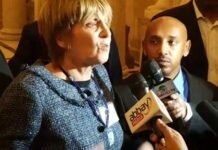


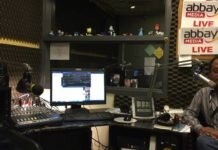
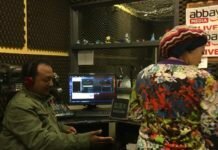
![Ghanaian youth besieged police training schools to be recruited into the service [no comment] Ghanaian-youth-besieged-police-training-schools-to-be-recruited-into-the-service-no-comment](/wp-content/uploads/2018/02/Ghanaian-youth-besieged-police-training-schools-to-be-recruited-into-the-service-no-comment-218x150.jpg.pagespeed.ce.yEUtKMJuxX.jpg)



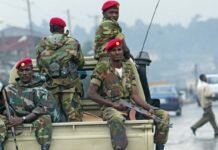
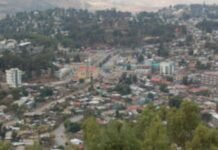
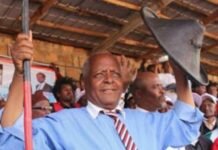
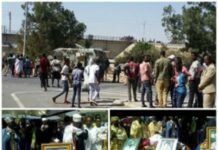






![Deaf Ear! Blind Eye! —Why Ethiopia’s Opposition must seize a golden opportunity for fundamental change–[ by Aklog Birara (Dr.)]](/wp-content/uploads/2017/12/aklog-218x150.jpg.pagespeed.ce.29_Zpow0pj.jpg)




![Ghanaian youth besieged police training schools to be recruited into the service [no comment] Ghanaian-youth-besieged-police-training-schools-to-be-recruited-into-the-service-no-comment](/wp-content/uploads/2018/02/Ghanaian-youth-besieged-police-training-schools-to-be-recruited-into-the-service-no-comment-100x70.jpg.pagespeed.ce.iRSzcd3D0e.jpg)











